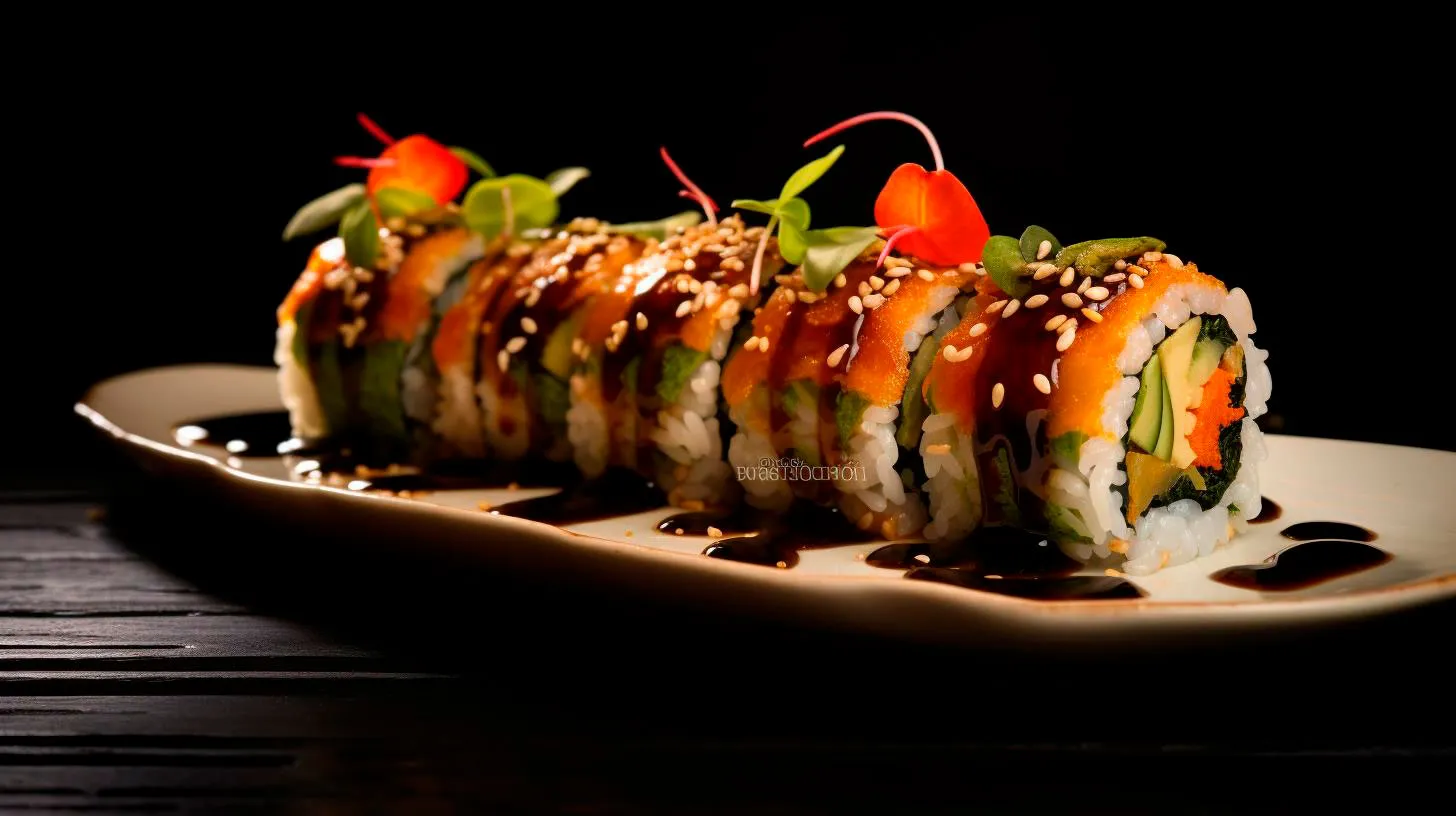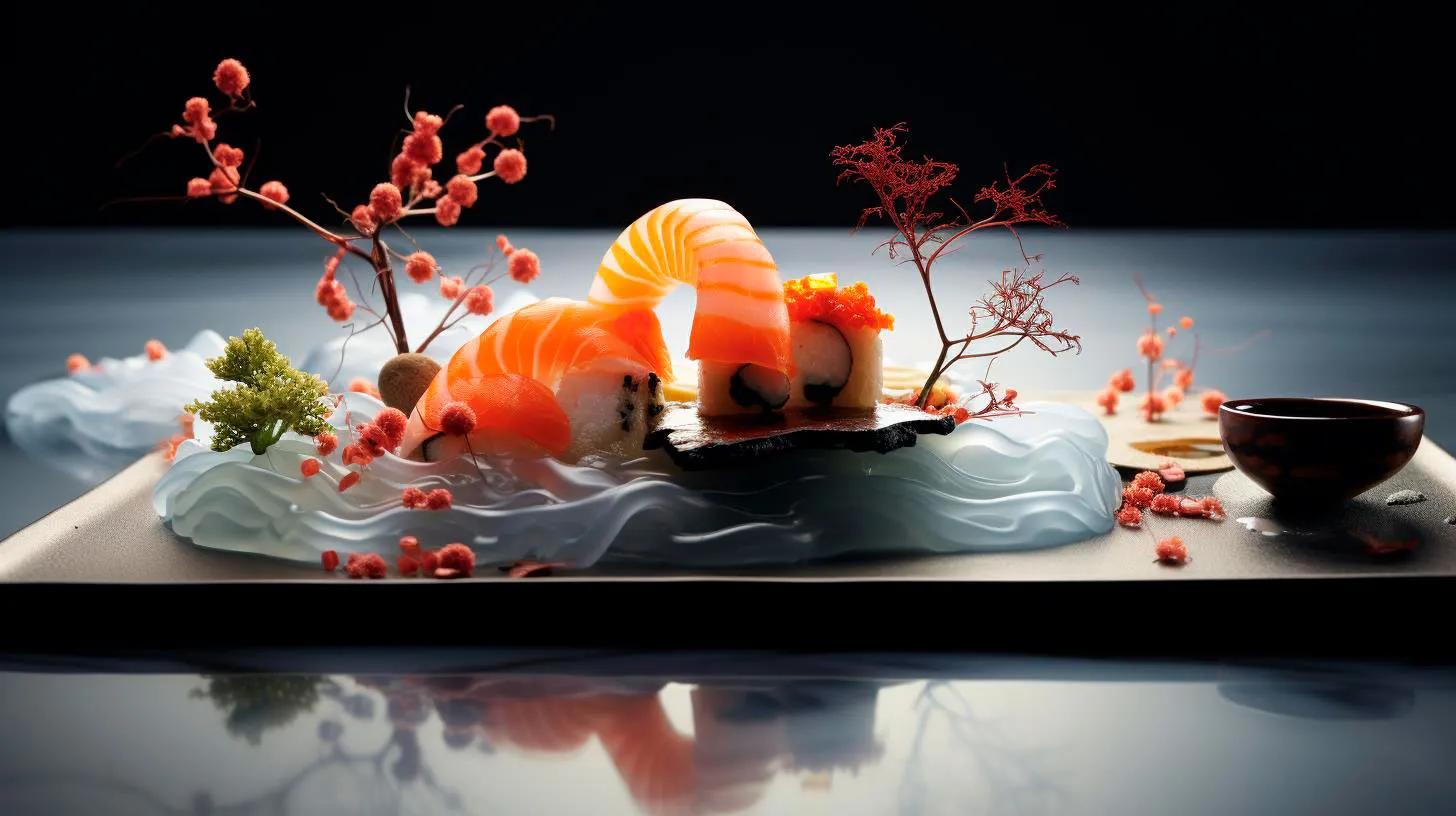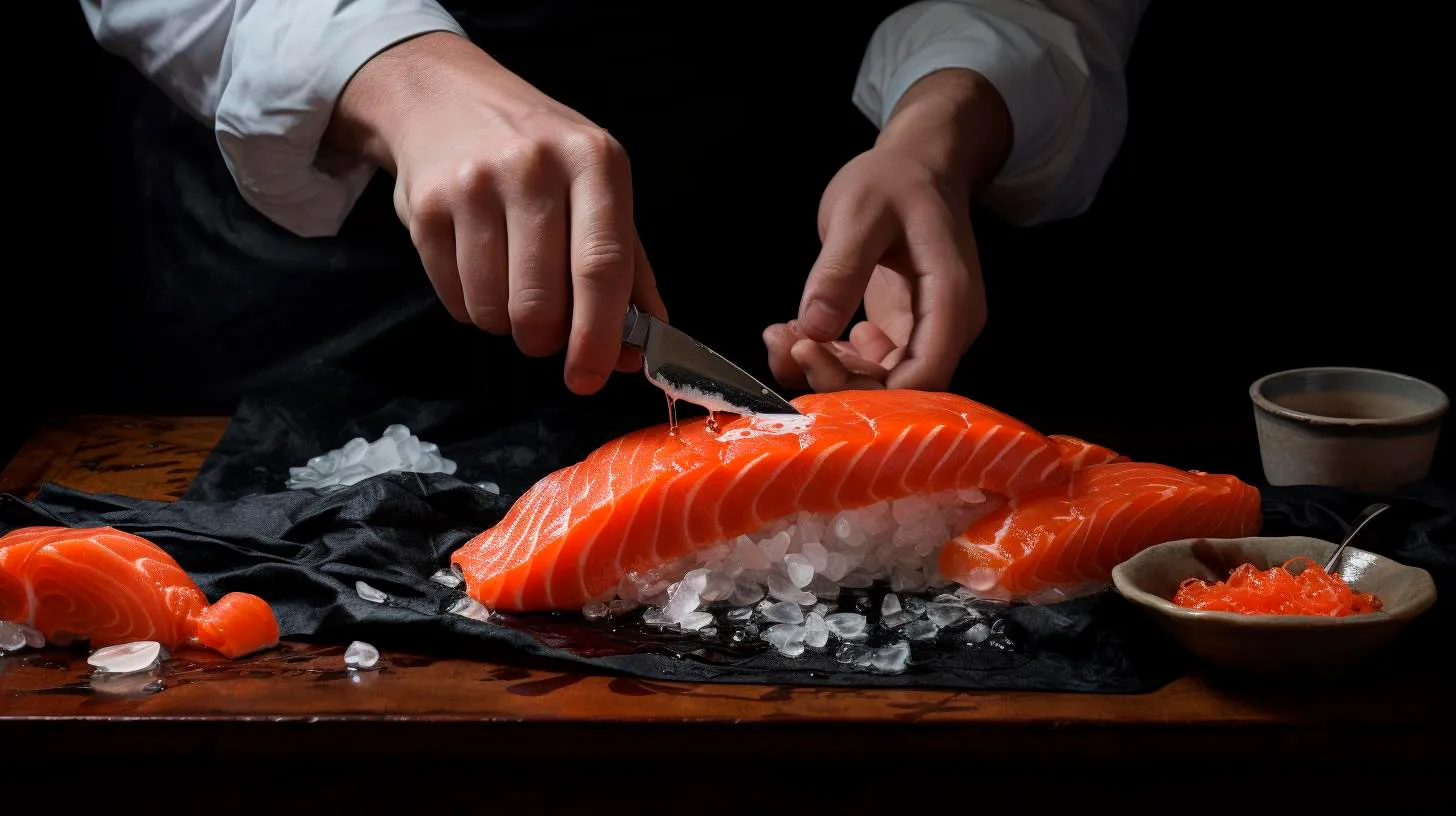Exploring the Legacy of Samurai through Tokyo Sushi Culture
Today, the legacy of the samurai still resonates in various aspects of Japanese society, including the world-famous Tokyo sushi culture. In this article, we will dive into the rich history of samurai and discover how their influence has shaped the art of sushi in Tokyo. Let’s embark on this fascinating journey that combines the ancient spirit of the samurai with the elegance and sophistication of sushi.
The Samurai Legacy and Its Ideals
The samurai class, which emerged in the 12th century, ruled Japan for several centuries. These highly skilled warriors lived their lives by a strict code of ethics called “bushido,” meaning “the way of the warrior.” Bushido encompassed virtues such as loyalty, honor, courage, and self-discipline. Samurai were not just fighters; they were expected to embody these principles in every aspect of their lives. The legacy of the samurai is deeply ingrained in the Japanese psyche and continues to influence many aspects of modern-day Japan, including its culinary culture.
Sushi: A Culinary Journey
Sushi, one of Japan’s most iconic dishes, has a long and storied history that dates back over a thousand years. Originally, sushi was a way to preserve fish by fermenting it with rice, but it eventually evolved into the delectable delicacy we know today. In Tokyo, the sushi scene is particularly vibrant and diverse, offering a range of dining experiences, from Michelin-starred restaurants to humble street stalls.
The samurai’s influence on Tokyo’s sushi culture can be seen in several aspects:
- Presentation: Just as the samurai paid great attention to their appearance and grooming, sushi chefs take immense pride in the visual presentation of their creations. Each sushi piece is meticulously crafted and arranged on the plate, reflecting the aesthetics and precision associated with the samurai.
- Attention to Detail: Samurai were known for their keen eye for detail, and this attribute carries over into the art of sushi making. From selecting the freshest ingredients to perfecting the balance of flavors, sushi chefs display the same level of dedication to their craft that samurai warriors showed on the battlefield.
- Seasonality: In traditional Japanese culture, seasonality plays a vital role. Samurai were attuned to the changing seasons and adapted their lifestyles accordingly. Similarly, sushi chefs in Tokyo prioritize using ingredients that are in season to ensure the utmost freshness and flavor. This practice aligns with the samurai ethos of embracing nature’s rhythms.
- Discipline: The samurai’s unwavering discipline is mirrored in the strict standards and rigorous training sushi chefs undergo in Tokyo. They dedicate years to perfecting their skills, learning about different fish varieties, and honing their knife techniques. This level of discipline is a cornerstone of both samurai and sushi traditions.
The Samurai-Sushi Connection
The synergy between the principles of the samurai and the art of sushi extends beyond surface-level similarities. The core values of the samurai – loyalty, honor, and discipline – seamlessly blend with the foundational values of sushi culture. Just as the samurai were expected to serve their lords with unwavering loyalty, sushi chefs aim to satisfy their customers’ palates and bring joy through their culinary creations.
Beyond the philosophical connections, the samurai-sushi connection can also be seen in the physicality and precision required in both practices. Samurai trained rigorously in martial arts, continuously refining their techniques. Similarly, sushi chefs dedicate countless hours mastering the art of slicing fish, molding rice, and perfecting the ancient art form of sushi making.
The Key Takeaways
Exploring the legacy of samurai through Tokyo sushi culture reveals captivating parallels between the two realms. Here are the key takeaways:
- The samurai’s code of honor and discipline continues to influence various aspects of Japanese culture, including sushi making.
- Tokyo’s sushi scene showcases the samurai’s legacy through its meticulous presentation, attention to detail, and emphasis on seasonality.
- The values of loyalty, honor, and discipline bridge the gap between the samurai and sushi culture.
- Both samurai and sushi chefs’ dedication to their craft requires years of discipline and training.
As you delve into the world of sushi in Tokyo, remember to appreciate not only the flavors on your plate, but also the rich legacy of the samurai warriors that continues to shape this culinary art form. Experience the essence of bushido as you savor each bite and recognize the profound connection between ancient traditions and the vibrant Tokyo sushi culture.
A Historical Gastronomic Journey: Tracing Sushi Evolution alongside the Samurai
Let’s dive right in!
The Birth of Sushi: A Humble Beginning
Before we delve into the samurai’s influence on sushi, it’s important to understand its origins. The inception of sushi can be traced back to the 7th century in Southeast Asia. It started as a method of preserving fish by fermenting it with rice.
Sushi, as we know it today, began to evolve during the Edo period in Japan, between the 17th and 19th centuries. During this time, Tokyo, then known as Edo, witnessed the rise of the samurai warrior class. They played a crucial role in shaping the culinary landscape by introducing their unique eating habits and spreading the popularity of sushi.
Sushi Meets the Samurai: The Fusion Begins
As samurai warriors delved into the world of sushi, they discovered its practicality as a portable, nutrient-dense meal. The combination of vinegared rice, fresh fish, and vegetables created a well-balanced and convenient food option that fed their bodies and sharpened their minds simultaneously.
The samurai’s influence can be seen in the development of nigiri sushi, where rice balls topped with slices of raw fish were created. This innovative variation of sushi catered to their demand for quick and efficient nourishment during battles and travel.
The Art of Presentation: Elegant and Exquisite
As the samurai embraced sushi, they also introduced the concept of “omakase” to its presentation. Omakase translates to “I leave it up to you” and gives the sushi chef creative freedom to showcase their skills by selecting the freshest seasonal ingredients and crafting unique combinations.
The samurai’s appreciation for aesthetics and attention to detail influenced the artistry associated with sushi. Each bite became a harmonious balance of colors, flavors, and textures, reflecting the samurai’s commitment to excellence.
Adopting Sushi: Beyond the Samurai Era
After the fall of the samurai class in the late 19th century, sushi continued to evolve and capture the hearts of the Japanese people. It gradually transformed from a niche food favored by warriors to a beloved culinary delicacy enjoyed by all.
In the 20th century, sushi underwent further innovation, culminating in the creation of the sushi roll, or “makizushi.” This revolutionized the way sushi was consumed, making it more accessible and adaptable to different palates.
Key Takeaways and Advantages
- The samurai warriors played a pivotal role in popularizing sushi, making it a staple food in Japan.
- Nigiri sushi, with its combination of vinegared rice and raw fish, was developed to cater to the samurai’s need for convenience and nutrition.
- The samurai’s dedication to perfection influenced the aesthetic presentation and craftsmanship associated with sushi.
- Sushi’s evolution continued beyond the samurai era, with the introduction of the sushi roll, making it more accessible to a wider audience.
Incorporating Sushi into the Modern World
Fast forward to the present day, and sushi has become a global phenomenon. It has transcended cultural boundaries and captivated the taste buds of people worldwide. Sushi restaurants can be found in nearly every major city, offering diverse options to cater to various dietary preferences and flavor profiles.
Moreover, sushi has undergone yet another transformation with the fusion of different culinary traditions. The popularity of fusion sushi, such as California rolls or tempura rolls, showcases the adaptability and creativity of this ancient dish.
The Enduring Legacy of Sushi
Sushi’s historical journey alongside the samurai warriors has left an indelible mark on the culinary world. Its evolution and adaptation demonstrate the versatility and timelessness of this beloved dish.
Whether you choose to enjoy traditional nigiri sushi or explore the innovative fusion variations, sushi continues to represent a harmonious blend of history, culture, and exquisite flavors.
Join us on this historical gastronomic journey, where sushi and samurai entwine to create a rich tapestry of culinary heritage and innovation. Experience the taste of history and savor the legacy of the samurai with every mouthwatering bite of sushi.
Unraveling the Intertwined History of Edo Tokyo and Sushi
In this article, we will dive into the fascinating history of Edo Tokyo and its relationship with sushi, uncovering the cultural roots, technological advancements, and enduring popularity of this beloved dish.
The Historical Roots of Edo Tokyo
Tokyo, formerly known as Edo, was the political and cultural center of Japan during the Edo period (1603-1868). During this time, Japan was ruled by the Tokugawa shogunate, and Edo emerged as a vibrant and prosperous city. The city’s growth was fueled by a booming economy, the development of a strict social hierarchy, and the influence of samurai culture.
One of the defining features of Edo Tokyo was its bustling food scene. As the capital city, Edo attracted people from all over Japan, creating a melting pot of regional cuisines. Street food stalls, known as yatai, offered a wide array of affordable and tasty dishes, making Edo a culinary destination.
The Birth of Sushi
The origins of sushi can be traced back to the 8th century in Southeast Asia, where preserved fish and rice were fermented together as a way to preserve the fish. Over time, this technique made its way to Japan, where it underwent significant transformations. The birth of modern sushi as we know it today can be attributed to the thriving food culture of Edo Tokyo.
During the Edo period, street vendors began offering small portions of vinegared rice topped with fresh fish, known as nigiri-zushi. This innovative way of serving sushi quickly gained popularity due to its convenience and flavors. As Edo continued to prosper, sushi chefs refined their techniques, experimenting with different fish, toppings, and presentation styles.
The Influence of Technology
The Meiji era (1868-1912) marked a turning point for both Tokyo and sushi. Japan opened its doors to western influence, embracing technological advancements and modernization. The introduction of refrigeration allowed sushi to be served with raw fish, revolutionizing the culinary scene.
With the rapid expansion of Tokyo as a global city, sushi continued to evolve. Conveyor belt sushi, also known as kaiten-zushi, was invented in the 1950s, enabling large quantities of sushi to be served efficiently. This concept revolutionized the way sushi was consumed, making it more accessible to the masses and popularizing it worldwide.
The Enduring Popularity of Sushi
Today, sushi has become a global phenomenon, loved by people of all backgrounds. It is no longer limited to traditional nigiri-zushi; innovative variations such as rolls (maki-zushi), temaki (hand rolls), and fusion sushi have emerged, catering to diverse tastes and preferences.
The appeal of sushi lies not only in its exquisite taste but also in its health benefits. Rich in omega-3 fatty acids, low in fat, and high in protein, sushi is a nutritious choice for those seeking a balanced diet. Additionally, the artistry and attention to detail that sushi chefs put into every creation make it a visually appealing and immersive dining experience.
Key Takeaways:
- Edo Tokyo has a rich historical heritage intertwined with the development of sushi.
- Edo Tokyo’s bustling food scene and culturally diverse population played a significant role in the creation and popularization of sushi.
- Technological advancements, such as refrigeration and conveyor belt sushi, have revolutionized the way sushi is prepared and consumed.
- Sushi has become a global phenomenon, offering a wide variety of options and appealing to diverse palates.
- Sushi is not only delicious but also a healthy choice, packed with nutrients and essential fatty acids.
In conclusion, exploring the intertwined history of Edo Tokyo and sushi reveals the deep cultural significance and evolution of this iconic dish. From its humble beginnings as street food in Edo to its widespread popularity today, sushi remains a staple in Japanese cuisine and a culinary delight cherished worldwide. So, the next time you savor a piece of sushi, remember the centuries of history and innovation that have shaped this delectable masterpiece.
Discovering the Origins of Edo-Style Sushi
In this article, we explore the origins, unique features, and key takeaways of Edo-style sushi.
The Birthplace of Edo-Style Sushi
Edo-style sushi, also known as nigiri sushi, can be traced back to the bustling streets of Edo, which is now known as Tokyo. During the Edo period in Japan (1603-1868), sushi emerged as a beloved street food, often enjoyed by commoners and samurais alike.
- Origins trace back to Edo period in Japan
- Became popular as a street food
- Commonly enjoyed by commoners and samurais
During this time, Edo was a major fishing hub, providing an abundant supply of fresh fish. Local sushi chefs began experimenting with combining vinegared rice and raw fish to create a unique and delicious culinary experience.
One of the key factors that differentiates Edo-style sushi from other variations is the use of fresh, high-quality ingredients. Chefs sought to achieve a delicate balance of flavors and textures by pairing the perfect cut of fish with seasoned rice.
The Unique Features of Edo-Style Sushi
Edo-style sushi is characterized by simplicity, elegance, and attention to detail. Here are some unique features that set it apart:
- Nigiri Sushi: The most iconic form of Edo-style sushi is nigiri sushi, which consists of a small mound of sushi rice topped with a slice of raw fish, shellfish, or other seafood.
- Edomae: Another distinguishing feature is the use of Edomae, a traditional method of preserving fish by marinating it in soy sauce or vinegar. This technique enhances the flavor and texture of the fish, providing a delightful experience for sushi enthusiasts.
- Freshness is Key: Edo-style sushi emphasizes the usage of the freshest ingredients available, especially when it comes to the fish. The chefs meticulously select the fish varieties based on seasonal availability and quality.
- Minimalistic Presentation: Edo-style sushi is often presented in its purest form, focusing on the natural colors and flavors of the ingredients. The sushi pieces are delicately shaped, allowing the fish to shine.
The Advantages of Edo-Style Sushi
Edo-style sushi offers several advantages that contribute to its popularity:
- Authenticity: Edo-style sushi represents the true essence of traditional Japanese cuisine. It provides a glimpse into the historical roots and cultural significance of sushi.
- Fresh and Healthy: By prioritizing fresh ingredients and minimal processing, Edo-style sushi offers a healthy dining option. The high omega-3 content in fish also provides various health benefits.
- Texture and Flavor: The carefully crafted combination of rice and fish creates a delightful contrast in texture and flavor. Each bite offers a harmonious blend of creamy, tender fish and slightly tangy, vinegared rice.
- Artisanal Craftsmanship: The skilled craftsmanship displayed by Edo-style sushi chefs is worth appreciating. Their precision and dedication are showcased in every piece of sushi they create.
Key Takeaways
As we have delved into the origins and unique attributes of Edo-style sushi, we have gained a deeper appreciation for this culinary art form:
- Edo-style sushi originated during the Edo period in Japan and became popular as a street food.
- Nigiri sushi and the use of Edomae are some of the distinct features of Edo-style sushi.
- The focus on freshness, minimalistic presentation, and skilled craftsmanship make Edo-style sushi stand out.
- Edo-style sushi offers authenticity, health benefits, and a delightful flavor experience.
Next time you indulge in a plate of delectable Edo-style sushi, savor each bite, knowing that you are enjoying a culinary tradition that has withstood the test of time.



